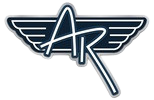Whether you've just purchased a new classic vehicle or already have a fleet of such vehicles on your property, one of the most common uses of such vehicles on a regular basis is for taking pictures. You might be looking to take pictures of the vehicle solo, or perhaps of you and others standing near it, riding in it or utilizing it for several other photogenic opportunities.
At Andersen Restoration Parts, we're proud to offer numerous classic car restoration parts for a variety of needs, from practical to aesthetic and everything in between. From complete front-end rebuild kits to suspension kits, control arm brushing kits and several other products, we'll ensure your classic car both looks and functions optimally for years to come. Here are some general tips we can offer if taking pictures is a regular part of your usage of your classic vehicle.
Materials Required
In addition to the camera you're using, which we figure you've already considered, here some of the items you might need:
- Tripod: The best pictures are usually the ones that are steadiest, and a tripod can be an enormous help in ensuring each picture you take is as sharp as possible. If you don't have a tripod, see if you can brace your camera against something solid like a railing or a wall.
- Remote shutter release: If your camera has one, this will come in handy so you don't have to worry about jostling the camera when you press the button to take the picture.
- Color wheel: Especially if you're going for high-quality, professional-looking pictures, a color wheel can help ensure the colors in each picture are as accurate as possible.
- Props: If you want to take pictures of people along with the classic car, you'll need to consider what kind of props you might need. These could be things like hats, sunglasses, uniforms, vintage clothing and so on.
Get the Clutter Out of the Way
Your pictures won't be as good if there's a lot of visual clutter in the background. Before you start taking pictures, do a quick scan of the area and remove any garbage cans, lawn chairs, power cords and other objects that might be an eyesore. If possible, try to find a spot where there are interesting background elements like trees or mountains that can add some extra visual interest to your pictures.
Use the Right Settings
If you're using a DSLR camera, make sure it's set to manual mode so you have complete control over the exposure, aperture and other settings. For the best results, try to use a low ISO setting to minimize noise in the picture, and choose a small aperture (higher f-stop number) to ensure as much of the picture is in focus as possible. You might also want to experiment with using a slow shutter speed to capture some motion blur in the background for a more dynamic effect.
Wheel Direction
One important theme when taking pictures of classic cars is to make sure the wheels are turned in the right direction! If you're taking a picture of the car from the front or rear, the wheels should be pointing straight ahead.
But if you're taking a picture of the car from the side, the wheels should be turned slightly to one side or the other so they look like they're "rolling" forward. This is a small detail, but it can make a big difference in making your pictures look more realistic and professional.
Lighting
Ideally, you want to take your pictures either in the early morning or late afternoon when the light is softer and more flattering. Avoid taking pictures in the middle of the day when the light is harsh and can create unflattering shadows. If you're taking pictures indoors, try to position the car near a window so the natural light can illuminate it.
Wide Enough Frame
One common mistake people make when taking pictures of cars is not framing the shot wide enough. Make sure to step back far enough so you can see the entire car in the frame, including all four tires. This will give your pictures a more "balanced" look and help show off the car's design.
Experiment With Different Angles
Don't be afraid to experiment with different angles when taking pictures of your car. Instead of just taking a picture from eye level, try getting down low to the ground for a more dramatic angle. Or climb up on a nearby wall or piece of furniture for a bird's eye view. You might be surprised at how much difference a small change in angle can make.
Filter Considerations
Another important element to consider when taking pictures of classic cars is the use of filters. Polarizing filters can help reduce glare and reflections, while ND (neutral density) filters can be used to slow down the shutter speed for a more creative effect.
For instance, if you're taking a picture of a car driving down the road, using an ND filter will allow you to use a slower shutter speed without over-exposing the picture. This will create a sense of motion in the picture and can be very effective.
With the right props, settings and angle, you can take some amazing pictures of your classic car. So get out there and start experimenting!
For more on this, or to learn about any of our classic car restoration parts or services, speak to the staff at Andersen Restoration Parts today.

